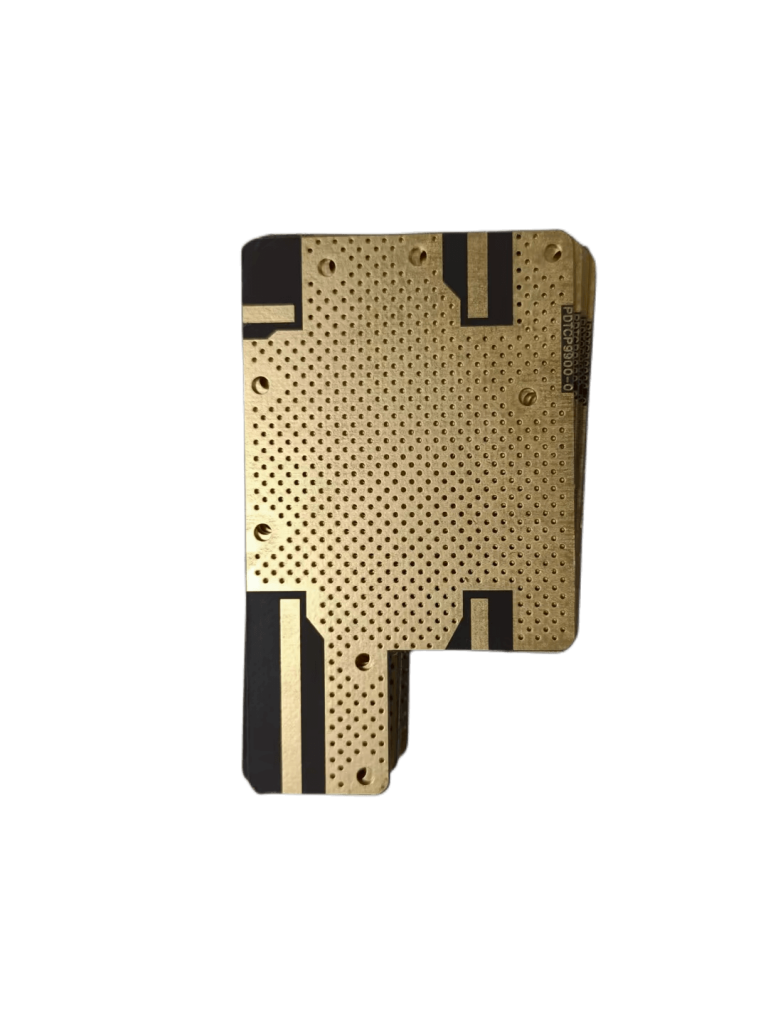
Introduction
In the realm of electronics and technology, the role of printed circuit boards (PCBs) is paramount, serving as the backbone of modern devices. Among the distinguished players in the PCB manufacturing industry, PTFE PCB has emerged as a pioneer, renowned for its unwavering commitment to innovation, quality, and cutting-edge technology. In this comprehensive article, we delve into the world of PTFE PCB manufacturing, unveiling the full range of material options they offer and the remarkable advantages that come with them.
Understanding PTFE PCB Material Excellence
PTFE, or polytetrafluoroethylene, is a fluoropolymer with exceptional electrical, thermal, and mechanical properties. PTFE-based PCB materials have gained significant prominence due to their versatility, making them suitable for a wide spectrum of applications across various industries.

One of the most significant advantages of PTFE PCB materials lies in their ability to cater to high-frequency applications. PTFE’s low dielectric constant and low loss tangent ensure minimal signal attenuation and distortion, making it an ideal choice for applications involving wireless communication, radar systems, and satellite communication.
PTFE PCB materials are known for their outstanding thermal stability and reliability. They can withstand a wide temperature range without experiencing significant changes in their electrical properties. This trait makes them particularly well-suited for applications where temperature variations are a concern, such as aerospace, automotive, and industrial electronics.
PTFE-based materials exhibit consistent electrical performance across a broad range of frequencies. This uniformity in behavior is crucial for maintaining signal integrity and minimizing signal loss, making PTFE PCB materials suitable for applications that require precise and reliable signal transmission.
PTFE PCB materials possess remarkable chemical resistance, making them resilient to the effects of moisture, chemicals, and other environmental factors. This resistance contributes to the longevity and reliability of the PCBs, making them suitable for harsh environments and demanding applications.
The low dissipation factor of PTFE-based materials ensures that minimal energy is lost in the form of heat during signal transmission. This property is particularly advantageous in high-frequency and high-power applications, where efficiency and performance are of utmost importance.
In an era of increasing environmental awareness, PTFE PCB materials stand out for their RoHS compliance and environmental sustainability. These materials do not contain hazardous substances like lead, mercury, and cadmium, aligning with modern regulations and industry standards for electronics manufacturing.
The Diverse Applications of PTFE PCB Materials
The advent of 5G technology has brought forth the need for high-frequency PCB materials that can support the increased data transmission rates. PTFE-based materials shine in this arena, ensuring low signal loss and reliable performance, thus contributing to the seamless functioning of 5G networks.
In the aerospace and defense industries, where reliability and durability are non-negotiable, PTFE PCB materials find extensive use. From avionics systems to satellite communication, these materials offer the stability and performance required to withstand the challenges of extreme temperatures and conditions.
The automotive industry demands PCB materials that can withstand temperature fluctuations, vibrations, and demanding conditions. PTFE PCB materials excel in this arena, providing consistent performance in critical automotive applications such as engine control units, safety systems, and infotainment systems.
PTFE-based materials are also making their mark in the medical electronics field, where precision and reliability are paramount. Applications like medical imaging equipment, implantable devices, and diagnostic tools benefit from the consistent electrical performance and chemical resistance offered by these materials.
In industrial settings, where electronics often face harsh environmental conditions, PTFE PCB materials provide the necessary ruggedness and durability. These materials contribute to the stability and efficiency of industrial automation, robotics, and control systems.
Conclusion
PTFE PCB manufacturing has revolutionized the electronics industry with its versatile range of material options. From enabling high-frequency communication to providing exceptional thermal stability, these materials cater to the diverse needs of modern technology. PTFE-based materials have found their place in industries ranging from telecommunications and aerospace to automotive and medical electronics. With their consistent performance, environmental sustainability, and unparalleled reliability, PTFE PCB materials continue to drive innovation and excellence in the electronics landscape, shaping the future of technology.